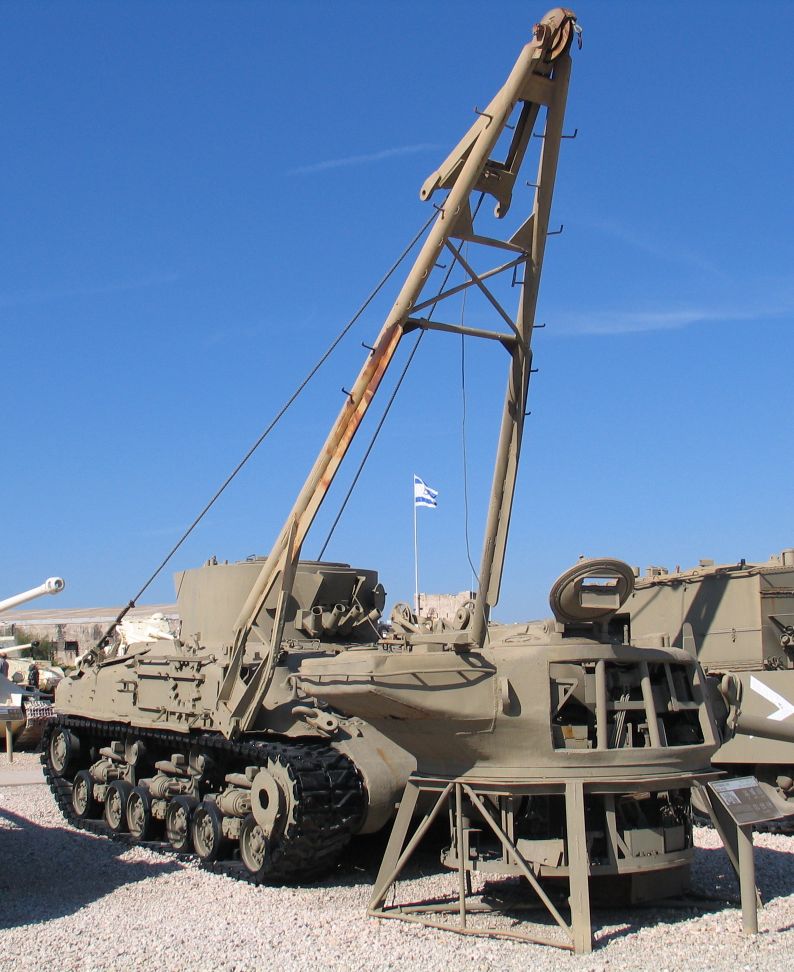|
Masting Sheer
A masting sheer, sheers, shears or masting crane is a specialised shipyard crane, intended for placing tall masts onto large sailing ships. "Sheers" is an old name for a fixed crane formed by one or two wooden beams, fixed at the base and supported by ropes. Ancient sailing ships did not require sheers to erect their masts, as they could be lifted into place by ropes and allowed to pivot around their feet. As ships became larger, their larger and heavier masts were no longer able to be handled in this way. A crane was needed, tall enough to lift the entire mast vertically and then lower it into the ship. By the 18th century, such sheers were a necessity in any large shipyard. As sheers are not required to move, they were often constructed as masonry towers, with wooden jib structures atop them. Few have survived intact, but some of the towers remain, having now lost their jibs. In the late 19th century, the increasing size and capacity of general harbour cranes began to overlap ... [...More Info...] [...Related Items...] OR: [Wikipedia] [Google] [Baidu] |
Mastekranen Holmen
Mastekranen (English: The Masting Crane) is an 18th-century masting sheer and present landmark on Holmen in Copenhagen, Denmark. It was designed by architect Philip de Lange and built in 1748–51 as part of the Royal Naval Shipyard at Holmen. History Under the reign of Frederick III, Holmen was established through a series of land reclamations to replace the naval base and shipyard at Bremerholm. The first ship to be set to sea from Nyholm was Dannebrog in 1692 and in the following years the construction of all major vessels gradually moved there. The facilities at Holmen were constantly expanded over the next centuries. Earlier the building of sailing ships had not required sheers to erect their mast, as it could be lifted into place by ropes and allowed to pivot around its foot. As ships became larger, it was no longer possible to mount their masts, taller and heavier, in this fashion. A crane was needed, tall enough to lift the entire mast vertically and then lower it into ... [...More Info...] [...Related Items...] OR: [Wikipedia] [Google] [Baidu] |
Sheers
Shear legs, also known as sheers, shears, or sheer legs, are a form of two-legged lifting device. Shear legs may be permanent, formed of a solid A-frame and supports, as commonly seen on land and the floating sheerleg, or temporary, as aboard a vessel lacking a fixed crane or derrick. When fixed, they are often used for very heavy lifting, as in tank recovery, shipbuilding, and offshore salvage operations. At dockyards they hoist masts and other substantial rigging parts on board. They are sometimes temporarily rigged on sailboats for similar tasks. Uses On land Shear legs are a lifting device related to the gin pole, derrick and tripod (lifting device). Shears are an A-frame of any kind of material such as timbers or metal, the feet resting on or in the ground or on a solid surface which will not let them move and the top held in place with guy-wires or guy ropes simply called "guys". Shear legs only need two guys whereas a gin pole needs at least three. The U. S. Army Fie ... [...More Info...] [...Related Items...] OR: [Wikipedia] [Google] [Baidu] |
Masonry
Masonry is the building of structures from individual units, which are often laid in and bound together by mortar; the term ''masonry'' can also refer to the units themselves. The common materials of masonry construction are bricks, building stone such as marble, granite, and limestone, cast stone, concrete blocks, glass blocks, and adobe. Masonry is generally a highly durable form of construction. However, the materials used, the quality of the mortar and workmanship, and the pattern in which the units are assembled can substantially affect the durability of the overall masonry construction. A person who constructs masonry is called a mason or bricklayer. These are both classified as construction trades. Applications Masonry is commonly used for walls and buildings. Brick and concrete block are the most common types of masonry in use in industrialized nations and may be either load-bearing or non-load-bearing. Concrete blocks, especially those with hollow cores, offer va ... [...More Info...] [...Related Items...] OR: [Wikipedia] [Google] [Baidu] |
Sheer Hulk
A hulk is a ship that is afloat, but incapable of going to sea. Hulk may be used to describe a ship that has been launched but not completed, an abandoned wreck or shell, or to refer to an old ship that has had its rigging or internal equipment removed, retaining only its buoyant qualities. The word hulk also may be used as a verb: a ship is "hulked" to convert it to a hulk. The verb was also applied to crews of Royal Navy ships in dock, who were sent to the receiving ship for accommodation, or "hulked". Hulks have a variety of uses such as housing, prisons, salvage pontoons, gambling sites, naval training, or cargo storage. In the days of sail, many hulls served longer as hulks than they did as functional ships. Wooden ships were often hulked when the hull structure became too old and weak to withstand the stresses of sailing. More recently, ships have been hulked when they become obsolete or when they become uneconomical to operate. Sheer hulk A sheer hulk (or shear hulk) wa ... [...More Info...] [...Related Items...] OR: [Wikipedia] [Google] [Baidu] |


